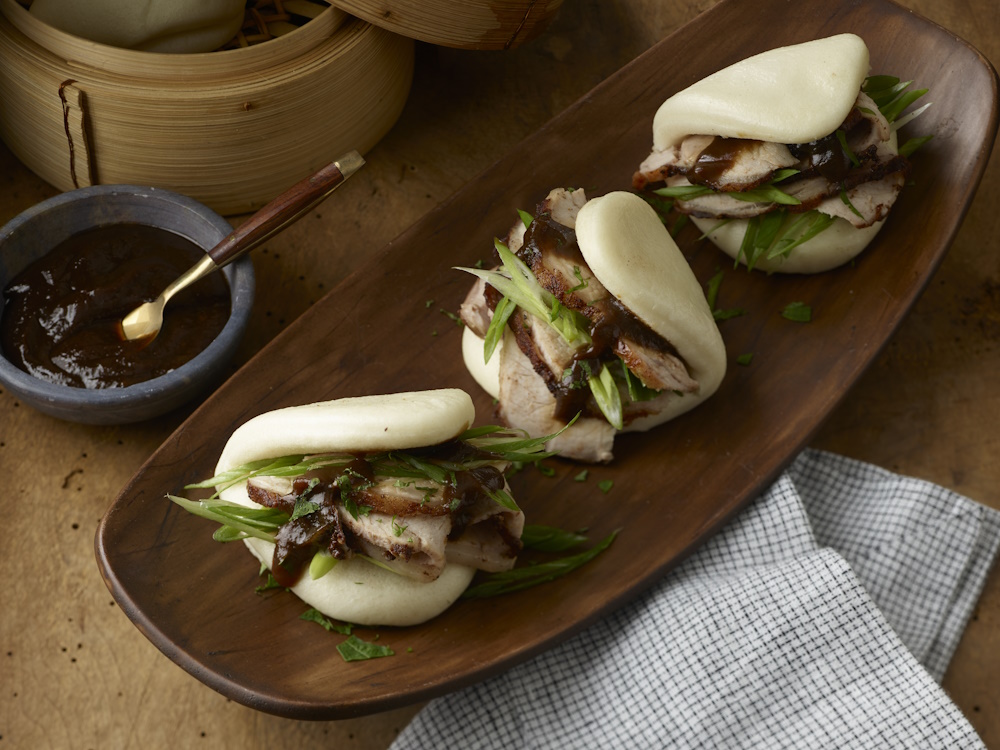
Season Types: Winter

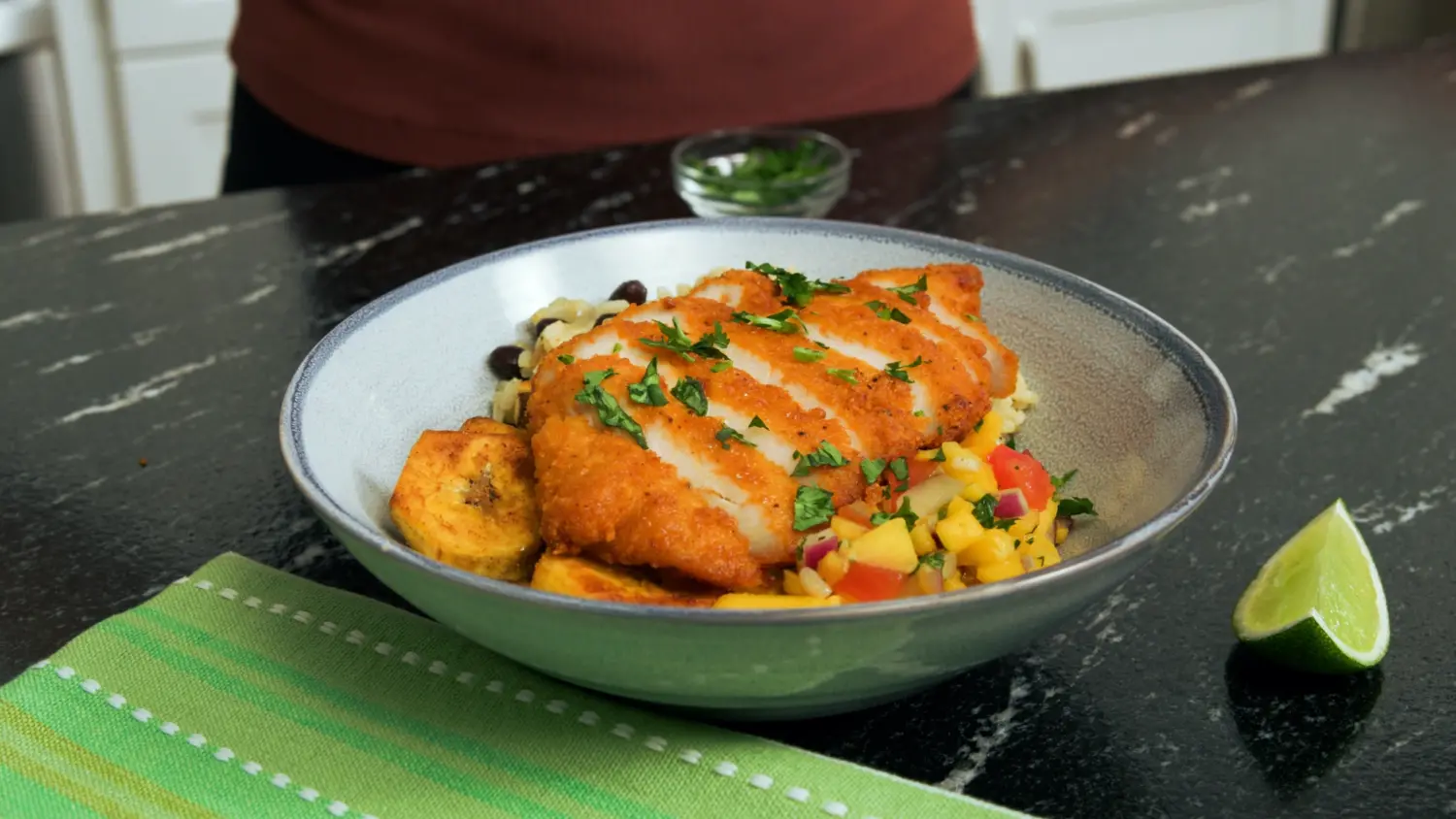
Cuban Chicken Bowls with Air Fried Plantains
Crispy Just BareChicken, cilantro lime rice, fresh mango salsa and crispy air fried plantains make up this delicious Cuban-style chicken bowl.
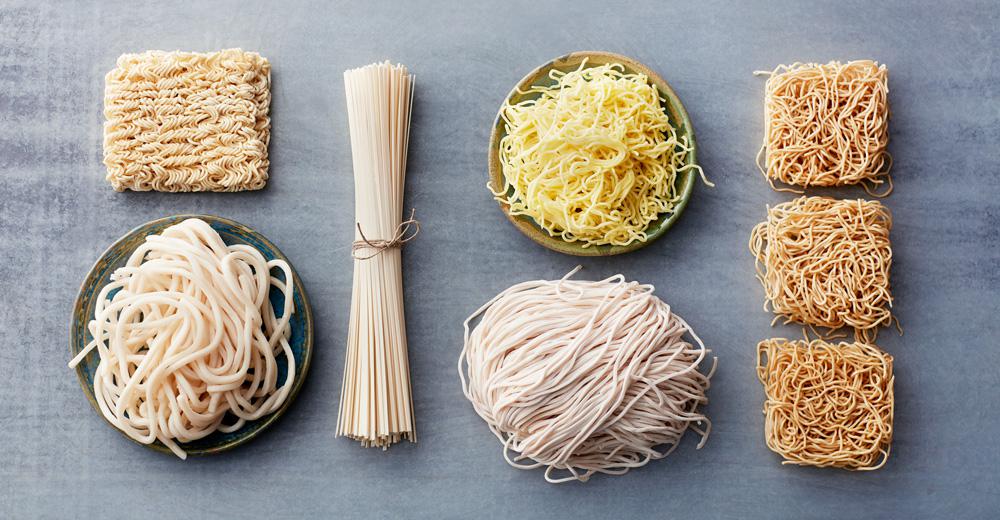
Riffs On Ramen
Noodle shop quality at home.
No matter how popular ramen gets or how celebrated noodle shops become (a nine-seat restaurant in Tokyo earned a Michelin star in 2016), there remains one essential truth about ramen and other noodles served ramen style. Nothing warms the heart like home cooking. Home, in fact, is where the love of noodles reaches its fullest expression. Nourishing, satisfying, welcoming. What’s for dinner? Chicken Miso Ramen, just the way you like it.
Wisdom of the ancients.
When you measure the history of anything in millennium, there’s a lot to talk about. And noodles go back at least 4,000 years. In recent decades, ramen earned a reputation as a budget friendly student staple, but that version is fried and dehydrated for fast cooking. Other options are now available to make fresh and serve in a wider range of settings.
By definition ramen noodles are wheat noodles. You’ll also find noodles in similar shapes and sizes made from rice and buckwheat, as well as other wheat noodles such as udon and somen. But ramen — which originated in China and soared to popularity in Japan after World War II — is a wheat product and is made with kansui, a mineral-rich water that’s alkaline and gives the noodles their golden color.
Broth basics, a not-so-secret process.
Much of the mystique ramen enjoys comes from the hearty broths almost always associated with the dish. The recipe for Chicken Miso Ramen outlines the steps, and note that you’ll need 2-4 hours to simmer a whole chicken (removing and refrigerating the meat after an hour and returning the bones to the stockpot). Only at the end, after you’ve strained the broth and are moments away from dinner, do you whisk in the miso along with pre-cooked noodles and shredded chicken.
What’s miso? Miso is made from fermented soybeans, sometimes with toasted barley or rice. It’s a key ingredient in Japanese cooking and exemplifies umami, considered one of the five basic taste perceptions along with sweet, sour, salty and bitter. Parmesan cheese and grilled steaks are other examples of umami. Here, miso gives this dish a rich, savory depth of flavor.
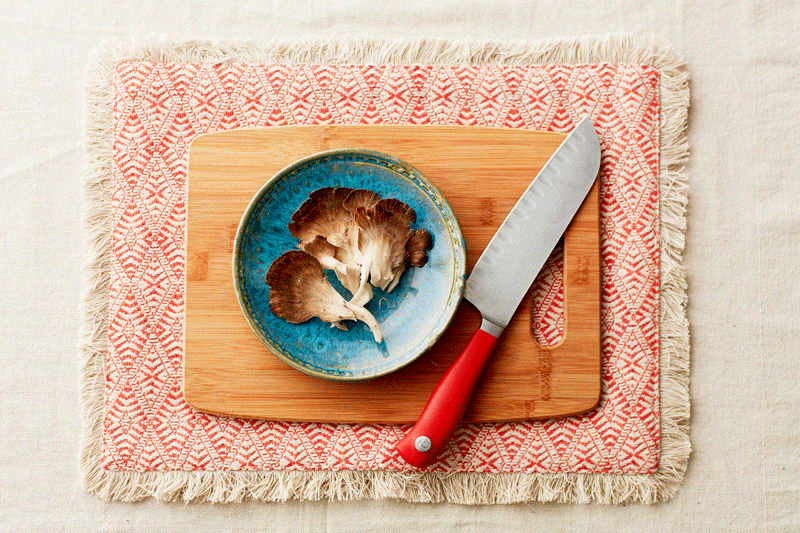
What’s your fancy?
Here’s where a humble bowl of noodles gets all showy. Top it with Napa cabbage, lotus root and corn? Perfect. Or what about carrot slices, mushrooms, hard-boiled eggs and a dash of garlic chile sauce? That’s another great combo, and the options are endless. Friends and family can complete their meals however they like. That’s the beauty of ramen. It’s a versatile backdrop for healthy, great tasting meals everyone loves.
Your own personal Zen state.
Simple yet infinitely adaptable, ramen opens the mind to all kinds of possibilities. Chicken Miso Ramen is an easy first step towards discovering the joy this age-old noodle brings to today’s favorite meals.
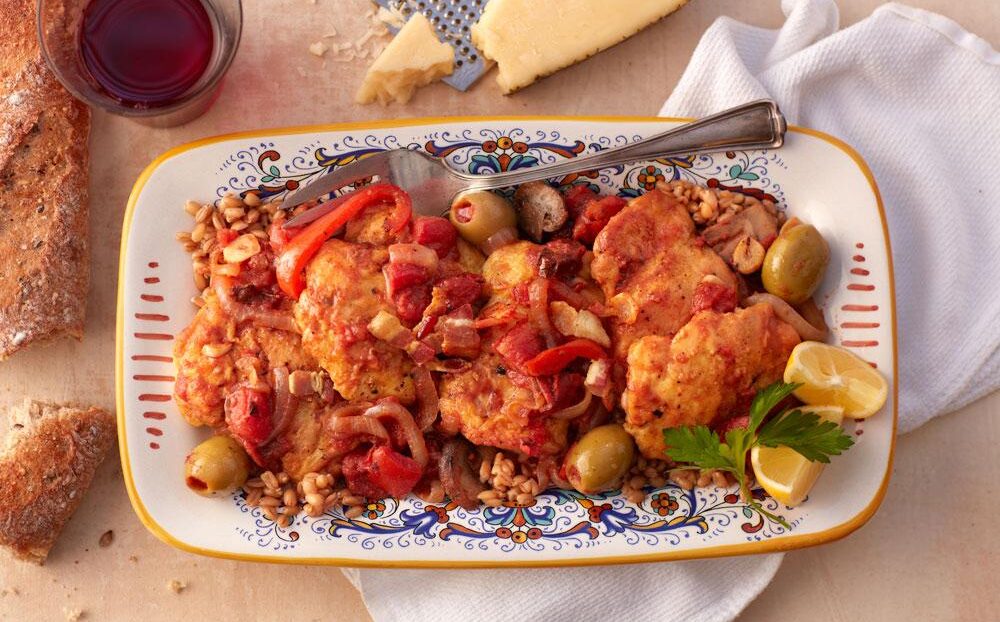
Cacciatore Creativity
Translating a classic.
Every few hundred years or so it’s a good idea to take a fresh look at a classic dish. An Italian-American favorite with roots in Italy going back centuries, chicken cacciatore is the perfect recipe to expand upon because variations have existed over time. In Italian, the word cacciatore means hunter, and it’s common to hear chicken cacciatore described as a hunter’s chicken stew. In Italy, though, the dish is more often known as pollo alla cacciatora, which actually means the hunter’s wife’s chicken stew. Whose dish is it, his or hers? It’s time to make it yours.
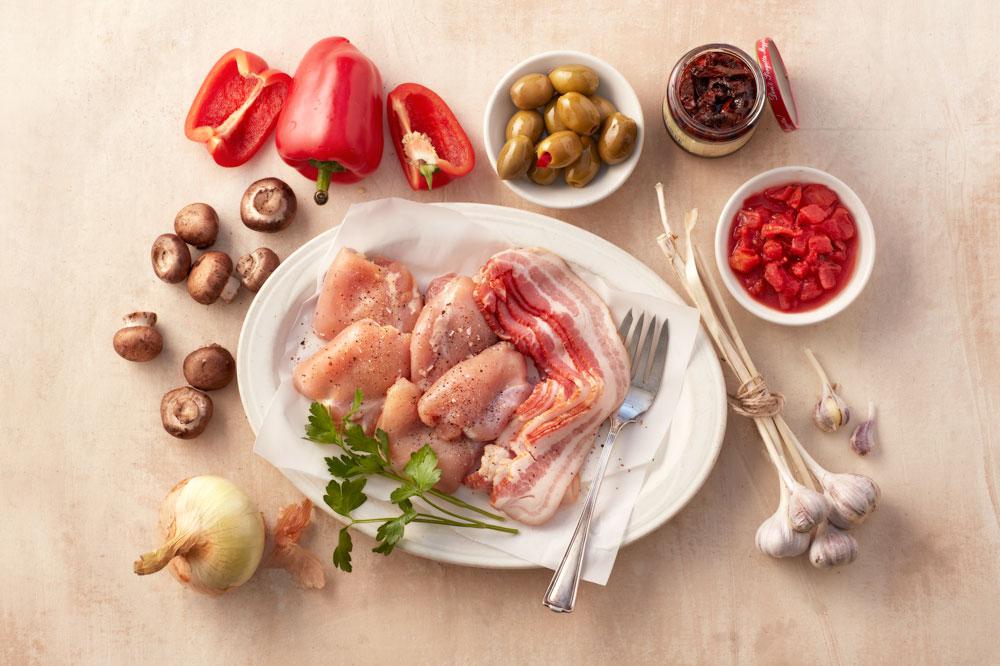
All the ingredients for a successful makeover.
The essence of chicken cacciatore is the combination of a lean meat, aromatic vegetables and savory mushrooms. Some early forms of chicken cacciatore don’t include tomatoes, which arrived in Italy in the 16th century as the result of explorations in the Americas and gradually became accepted as an edible food. But the version of chicken cacciatore popularized in Italian-American cooking in the 1950s usually features a red sauce, typically thick and heavy.
This new recipe for Refreshed Chicken Cacciatore calls for diced tomatoes plus sun-dried tomatoes. It also includes pimiento-stuffed olives for a sweet-and-salty bonus. Pre-cooking bacon or pancetta adds a depth of flavor to go along with the olive oil you’ll use to sauté the chicken thighs and veggies. It all comes together in the skillet for 15 minutes of braising, which in fact is the secret for why this recipe is so beloved.
In praise of the braise.
Though braising is similar to simmering in the sense there’s liquid and low heat, the two cooking techniques are different. With braising, you’re using just a small amount of liquid or sauce to finish cooking a main ingredient — usually meat — that’s already been sautéed and browned. When you’re simmering a stew, in contrast, all ingredients are completely submerged.
Braising can be a lengthy process, but it doesn’t have to be. Here, it’s just 15 minutes in a light sauce you create from red bell peppers, onions, mushrooms, diced tomatoes and white wine or chicken broth. The veggies stay crisp, and the chicken remains tender and moist.
Finish with farro.
Chicken cacciatore pairs perfectly with your favorite rustic bread or rice, but there’s an ideal option even older than the recipe itself and also associated with historic Italian cuisine. Serve your chicken cacciatore with farro, which looks and tastes like a light brown rice. It’s sometimes called emmer, and this high fiber whole grain contributes B vitamins, zinc, iron and protein.
If you’re on the hunt for a fresh new take on a classic recipe, try Refreshed Chicken Cacciatore. It’s yours to savor and enjoy, a healthy new variation that makes a great meal even better.
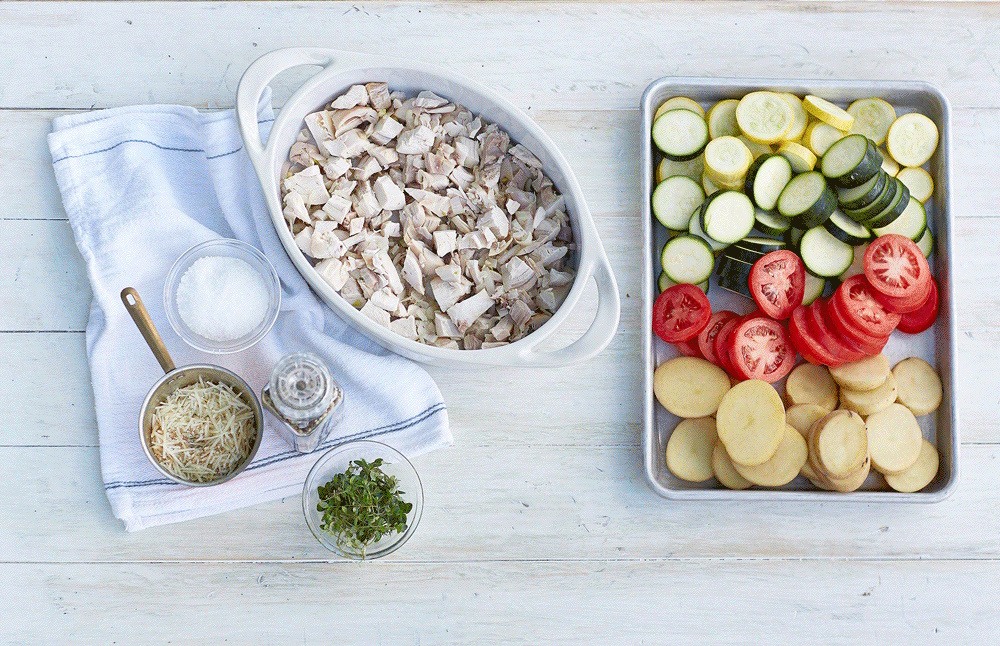
Summer in France
Celebrating the moment with family and friends.
It’s beautiful. Or as the locals would say, C’est beau! That’s the #1 reaction of visitors to France at the height of the growing season. Fresh produce abounds. Meals both simple and sublime surprise and delight. And for one of the nation’s most widely celebrated events, Bastille Day on July 14th, that’s a good time to keep things simple so there’s more time conversing instead of cooking. And why not enjoy the occasion outdoors? Let the festivities begin.
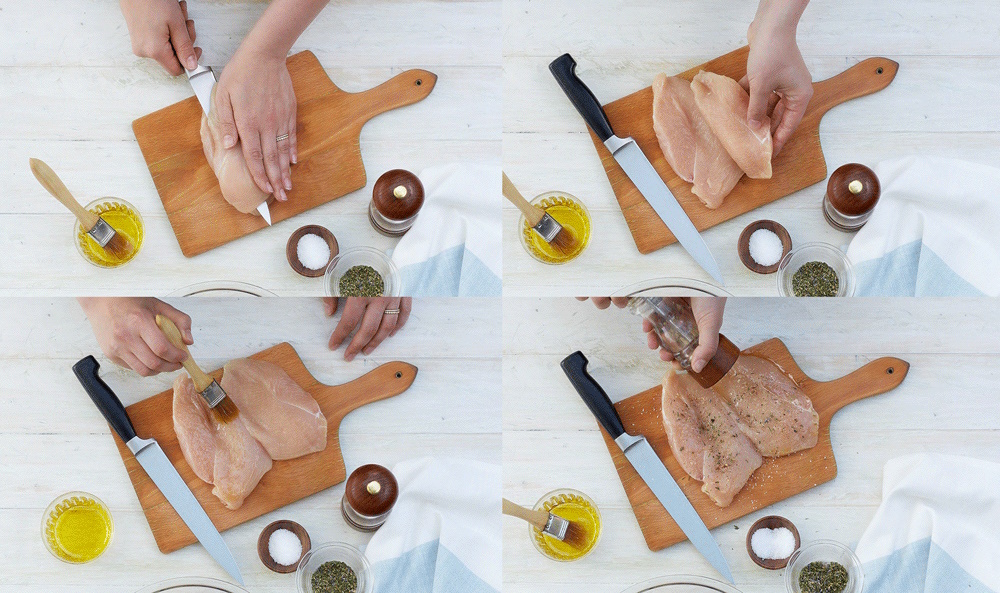
Not too thick, not too thin. Just right.
Based on the goal of simplicity, ease of preparation and maximum time outdoors, an easy option for grilling boneless, skinless chicken breasts is to turn them into paillards. The standard definition of a paillard is simply a thin piece of meat, often created by pounding. But you can also slice a chicken breast in half horizontally and get two cutlets of equal thickness for fast, even cooking. Brush on some olive oil, sprinkle with seasonings and you’re ready to grill.
From flame to feast.
Grilling a chicken paillard takes about three minutes a side. It’s that quick. And while the grill is hot, veggies of all kinds can be quickly roasted. But what holds all this together? Is there a sauce that brings out the best of chicken, veggies and even bread? Yes. In French cooking, the answer is a Grand Aïoli, which is essentially a garlic mayonnaise made from egg yolks, olive oil, salt, herbs and lemon juice. You can make it in minutes in a mini chopper or blender, as you’ll see in the recipe for Grilled Chicken Paillards Le Grand Aïoli.
Vegetable & Chicken Tian de Soleil.
French cuisine has earned a reputation for quality over quantity. Select, well-sourced ingredients skillfully prepared and served in reasonable portion sizes set a good standard for any meal. A great way to use leftover chicken and abundant summer produce is Vegetable & Chicken Tian de Soleil. In southern France, a “tian” refers to an earthenware cooking pot and also a baked dish of chopped veggies topped with cheese. Slice the veggies, bake and serve.

To everyone gathered, bon appétit!
Your feast is dazzling. Not because it’s complicated or required hours of preparation. Save that for another day and season. The season of the sun is here — warm, welcoming and bright with smiles. Take a cue from the French, and let their approach to summer inspire your next get-together. Simplicity brings out the best of summer. Bon appétit!
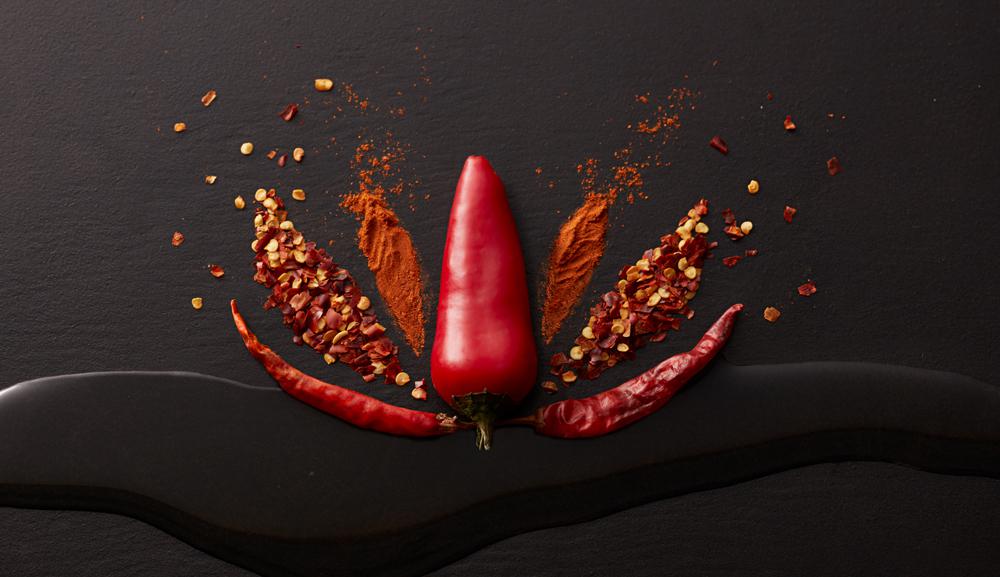
Destination: Vietnam
Irresistible in every way.
Even before you taste it, your senses are telling you a dazzling experience awaits. Aromatic herbs and pungent fish sauce evoke curiosity. A colorful medley of fresh veggies extend a visual invitation. And the actual taste? That’s where it all comes together in Vietnamese cooking. The acclaimed and diverse cuisine of Vietnam is noted for its delicious balance of flavors. All five – sweet, salty, sour, bitter and umami – are often represented in a single dish. The combination is irresistible.
National flower, lotus. National cuisine, equally as distinctive.
Vietnam is a country comparable in size to Italy with food traditions centuries old. Close contact with neighboring cultures has shaped historic and contemporary Vietnamese cuisine, and the country has incorporated items from farther away such as French baguettes and chile peppers from the Americas. But with a coastline of more than 2,000 miles (excluding islands), it’s fish and seafood that influence much of Vietnam’s cooking. Fish sauce in particular is a key ingredient, and it’s included in this new recipe for Vietnamese Lemongrass Chicken With Glass Noodles. A fermented sauce made from anchovies and salt, fish sauce is an umami staple, similar to gochujang in Korea or miso in Japan.
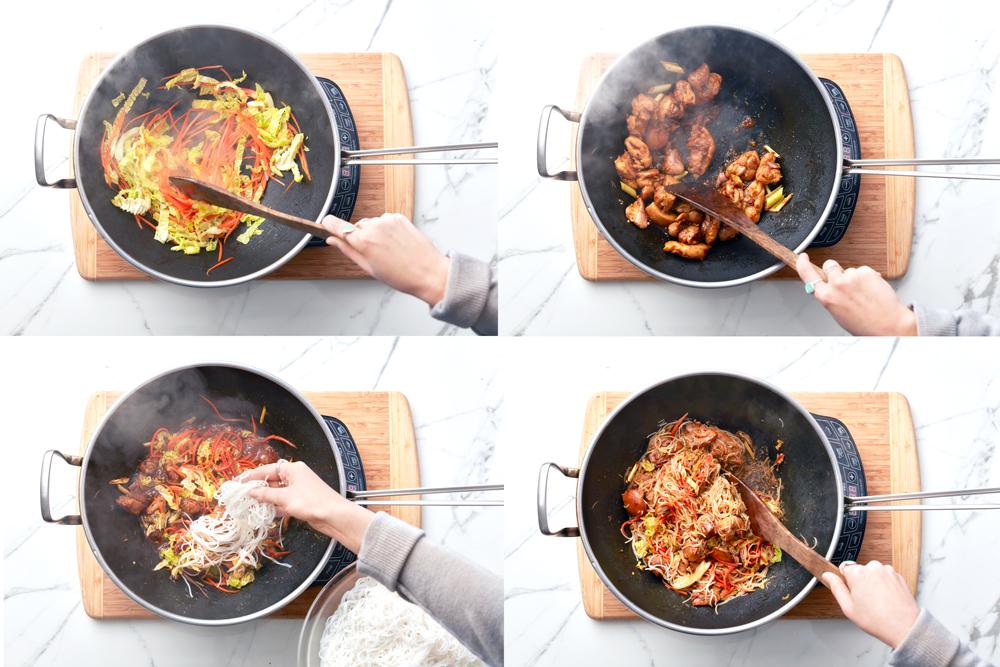
Prep, then proceed.
In addition to fish sauce, Vietnamese Lemongrass Chicken With Glass Noodles builds its rich flavor profile with brown sugar, limes, crushed red pepper and other more. The recipe is simple and cooks very quickly, but the essential first step for a successful stir fry is preparation. Cook the noodles, and make sure everything is measured and cut or shredded before you start heating up the wok. Stir fry the veggies first and remove. Then add the chicken, and when it’s done, return the vegetables to the wok along with the noodles. That’s it. Top with green onions and fresh mint, cilantro or Thai basil.
More fish sauce, please.
Vietnam isn’t the only country that enjoys fish sauce. Other countries include Cambodia, Laos, Thailand, Myanmar and China. In ancient Greece and Rome, a fish sauce called garum was popular. As you get familiar with fish sauce in Vietnamese Lemongrass Chicken With Glass Noodles, let the balance of flavors inspire even more creativity.
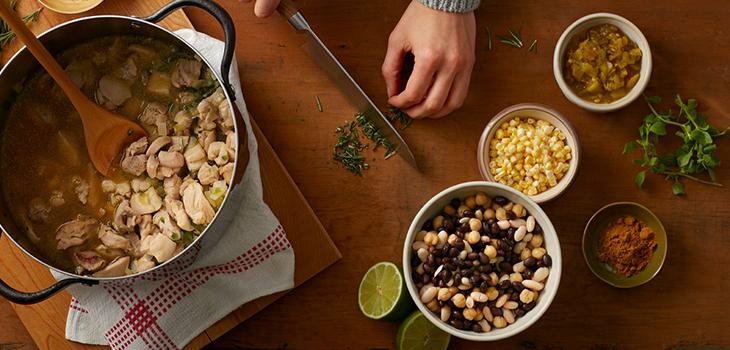
Cook, freeze, feast
Going big – fun, friends and freezer-ready meals.
What is it about winter weekends that make simmering a big pot of soup or stew such a great idea? Obviously, large batch cooking has merits in any season — armloads from the farmers market in spring, heavily laden grills in summer, harvest parties in autumn — but winter is the prime season for turning up the heat on cooking in quantity. The coldest season also inspires an additional thought. Why not freeze individual portions for fast, healthy meals later on?
Plan accordingly.
Certain meals lend themselves better than others for freezing and reheating, and savory broth-based soups and stews are among the best. The recipe featured here, Sonoran Chicken Chili, is a cold weather favorite and freezes well, retaining its flavor and consistency. Two other options are Chicken & Mini Pasta Soup and Hearty Chicken Ribollita Soup.
Note, too, that part of your planning might include who to invite over to join the fun. Cooking in large quantities is even more enjoyable when you’re sharing the experience with friends and family. Think of it as a dinner party that repeats itself. Multiply, divide and conquer. The more cooks in the kitchen, the more new recipes you’ll learn and enjoy in the coming weeks.
Pro tips for the path to the plate.
Large batch cooking doesn’t necessarily require enormous stock pots or kettles. They’re handy, but two medium-size pots work just as well and are easier to stir. For dividing into portions and preparing, airtight glass containers are ideal because you can use the same container to safely thaw the food in the refrigerator and reheat it in the microwave. Just let the soup or stew completely cool before placing individual portions in the freezer, and leave some room for freezer expansion. A half inch of headspace under the lid should be enough.
We meet again.
In the perfect world, meals rotate out of the freezer for thawing and reheating in 90 days. Even in that amount of time, though, it’s easy to forget key details. If you’re using glass containers, a practical solution is to user freezer tape to record the name of the meal, the date you made it and specific reheating instructions. Most reclosable freezer bags include a labeling area.
Got a lazy winter weekend coming up? Snow day in the forecast? Quiet evening at home? Large batch cooking looks ahead to times when life isn’t quite so leisurely. What’s for dinner when time is short? It’s already in the freezer.
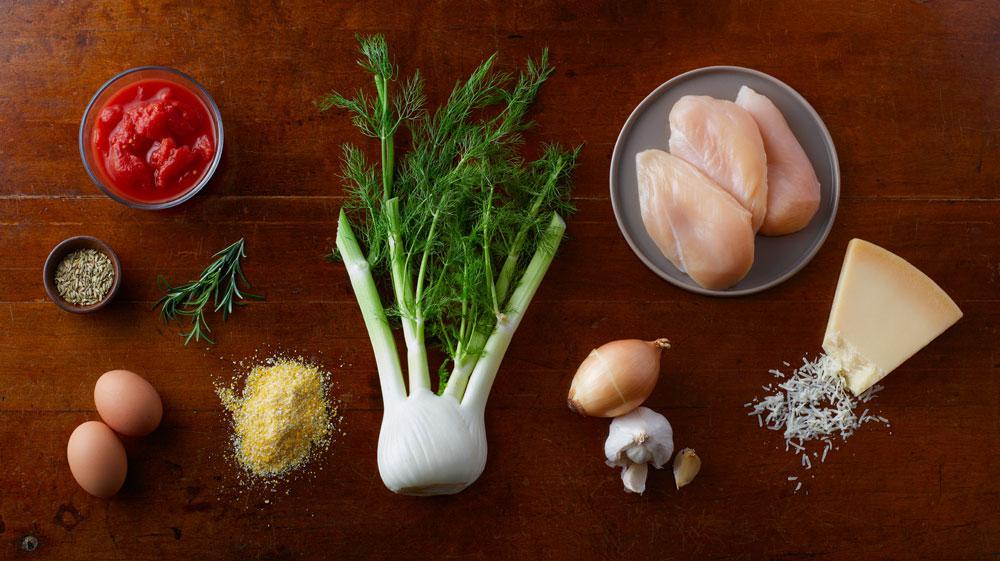
A Classic Redefined: Chicken Parmesan
An Italian-American favorite, with emphasis on the hyphen.
This story begins with eggplant. But before launching into the origins of one of the world’s most favorite chicken entrées, a word about this new series, Classics Redefined. This article takes a similar approach, presenting a fresh look at a familiar dish and exploring new options for ingredients and sides. It’s also the start of a new series called Classics Redefined, which will appear several times throughout the year.
What’s the connection between eggplant and chicken parmesan? In southern Italy, there is in fact a dish known as eggplant parmigiana. Food historians point to it as the predecessor of the meat-based recipes that originated on the east coast of the United States in the early- to mid-20th century. In America, chicken and veal were readily available at a more reasonable cost than in Italy, and newcomers adopted what they knew from the old country to the new. What’s next for this Italian-American classic? It’s time to find out.
Get to know fennel.
Fennel originated in the Mediterranean region and is a cold season vegetable. Just looking at it, some people might mistake it for celery or even dill. But once you taste this crunchy, slightly sweet vegetable with a licorice-like, anise flavor, the fresh taste of fennel is unmistakable. It’s a welcome addition to many different recipes, and all of it is edible — the bulb, fronds and seeds. This recipe features a sauce made with onion, garlic, fresh rosemary, sliced fennel, fennel seeds and San Marzano tomatoes. If you can’t find fresh tomatoes, look for the canned version (whole tomatoes, 28 ounces, undrained).
Lean chicken, maximum flavor.
The key to perfectly cooked chicken is to flatten the chicken into an even thickness with a meat mallet or rolling pin. Dipped into lightly beaten eggs, the cutlets will be dredged in a mixture of coarsely ground cornmeal, garlic powder and fresh mozzarella cheese. The initial baking time is brief, just 12 minutes. Heat through until internal temperature reads 165ºF. Remove, top with parmesan cheese and return to the oven for a few more minutes. This dish is ready for your fennel-rich sauce and a perfect side.
Perfect with polenta.
You can definitely serve this dish with pasta, and many people do. But here’s another idea — pre-cooked polenta, available in the produce section of your grocery store. It perfectly complements the cornmeal the chicken is coated with, and it’s gluten-free. For a perfect veggie side, a quick sauté of zucchini squash cut into long, thin slices is ideal.
Find a night soon for this new take on chicken parmesan. Family and friends will smile at the mere mention. But once they see, smell and taste how a classic can be redefined, they — like you — will look forward to many more creative new meals to come.
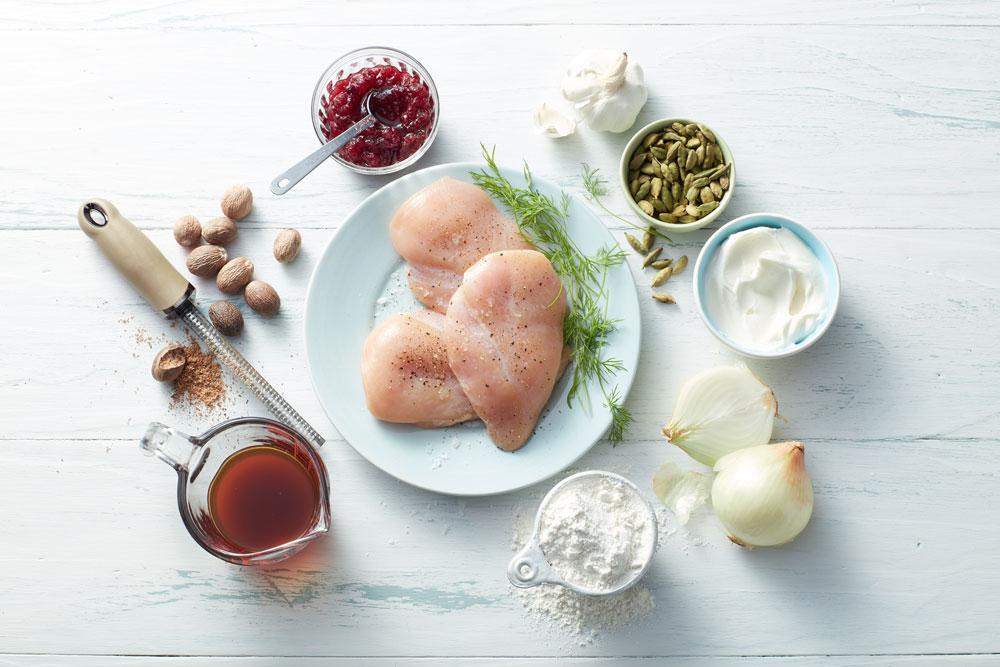
Solstice Celebrations
Light fare, both kinds.
The farther north you live, the more you appreciate the significance of the summer solstice, the first day of summer. To reach this point, it’s taken six months for the days to get longer and the nights to get shorter, and in some places the transition is extreme. Take Sweden’s northernmost town of Kiruna, located above the Arctic Circle. In December on the first day of winter, the sun never even rises above the horizon, and it’s not until the first week of January that residents see the sun again. From there, it’s a slow but steady march to the summer solstice in June with a full 24 hours of sunlight. Reason to celebrate? Yes, Sweden has every reason to celebrate the solstice.
The midsommar smorgasbord.
Other cultures, of course, celebrate the summer solstice too. If you’re in Austria on the first day of summer, you might see bonfires on mountain peaks. If you’re in Portugal, you might cheer for fireworks filling the night sky for St. John’s Day.
But if you’re in Sweden, you want to leave the city and get outdoors, preferably at a lake cabin or by the sea. Family and friends are there with plenty of food and drink, and to keep things active and informal, buffets are perfect for bringing people together and keeping the festivities moving. After all, the term smörgåsbord is Swedish, and this sometimes lavish array of food items can include hot and cold meats, breads, cheeses, fresh berries, fresh produce and more. Finger foods are a great way to fuel the fun, and that means one favorite is required, Swedish meatballs.
A new spin on meatballs.
Classic Swedish meatballs, or köttbullar, are usually made with a ground meat mixture of beef and pork. But since the goal of midsummer is being active and making the most of every minute of daylight, why not lighten things up with Swedish-Style Chicken With Creamy Dill Gravy? It’s a quick, delicious recipe. Simply cube boneless skinless chicken breasts into 1-inch squares and sauté. Then make the gravy in the same skillet and combine. Less time cooking, more time celebrating. That’s the way to savor the solstice.
Summer at its peak.
Swedish-Style Chicken With Creamy Dill Gravy takes advantage of seasonal herbs, in this case chopped fresh dill. But there’s so much more available at local farmers markets or growing in home gardens. Start planning your solstice celebration or summer feast today. The long, leisurely days of midsummer don’t last forever. Such golden moments are truly times of celebration.
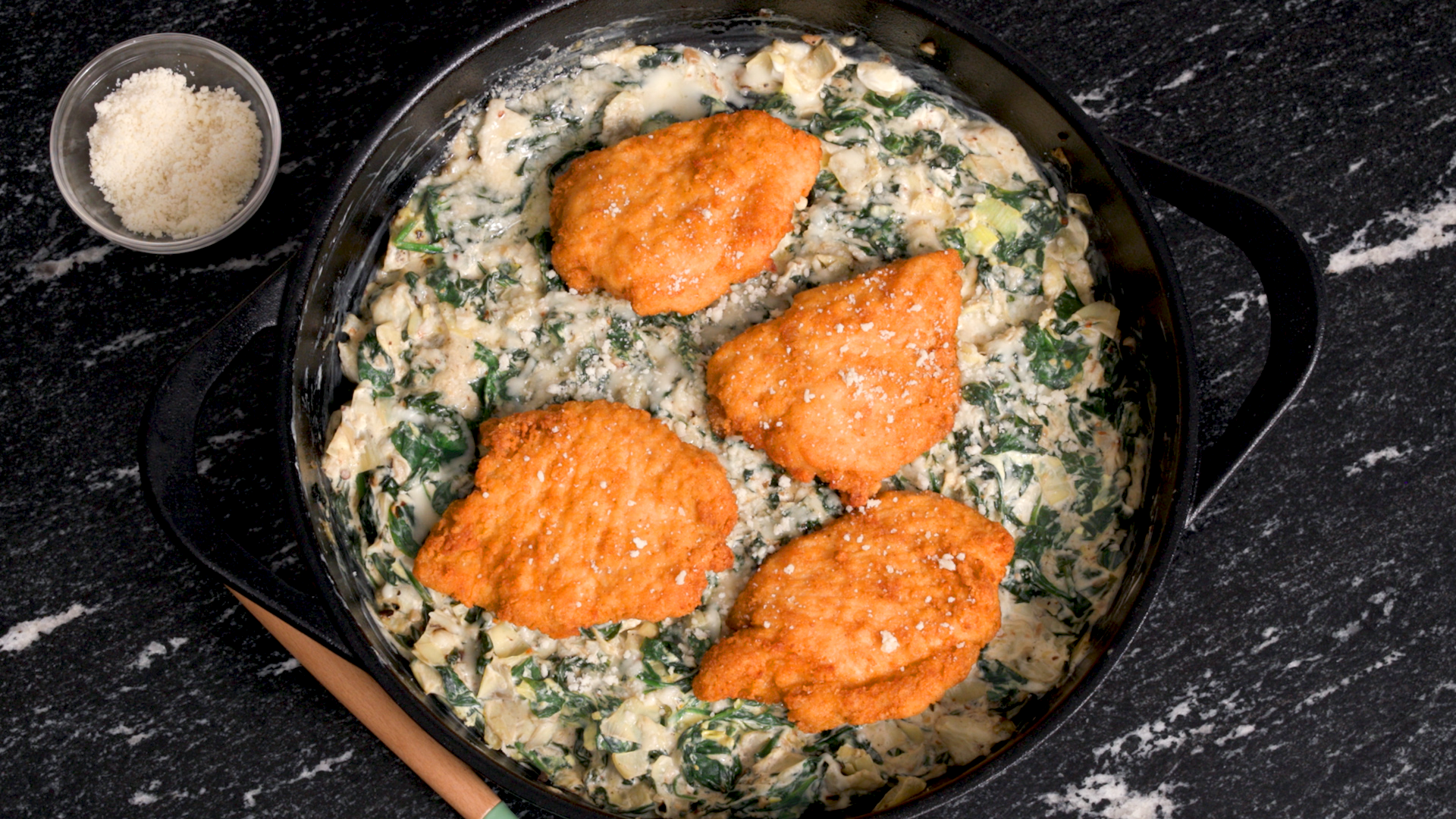
Spinach and Artichoke Baked Chicken
This recipe is a lighter take on the traditional spinach and artichoke dip. Paired with Just Bare® Lightly Breaded Chicken Breast Fillets, the dip adds a creamy texture to the crispy, air-fried chicken fillets.
